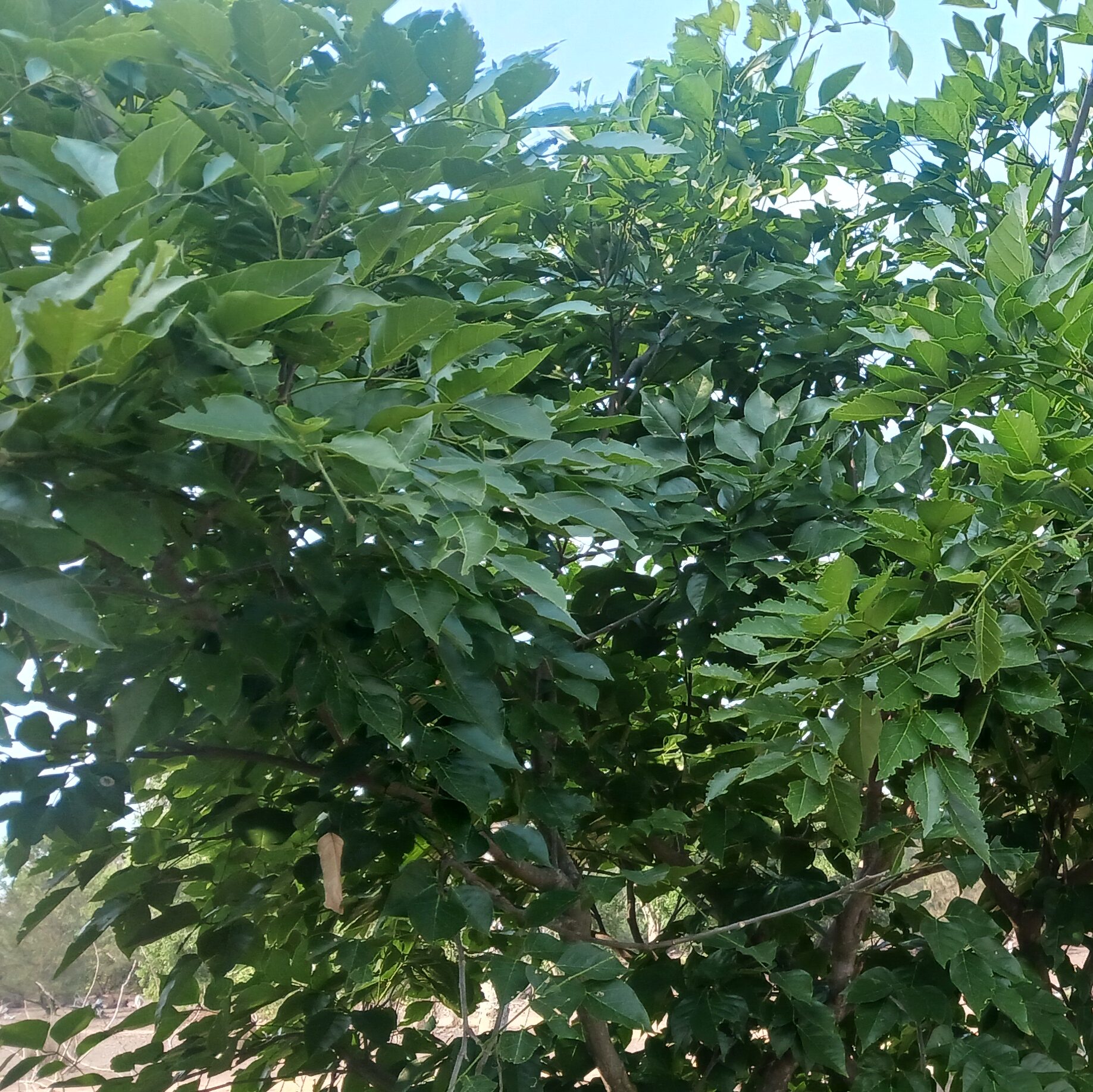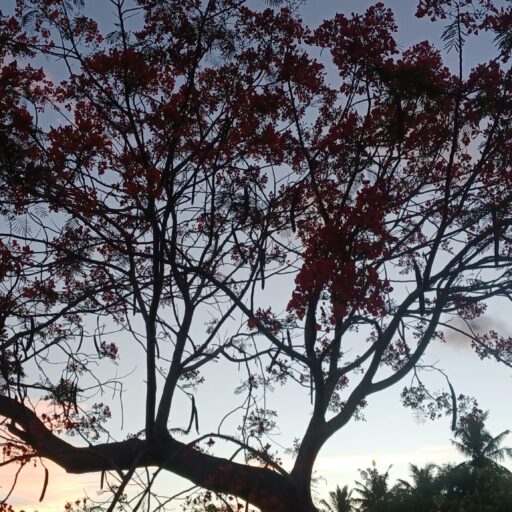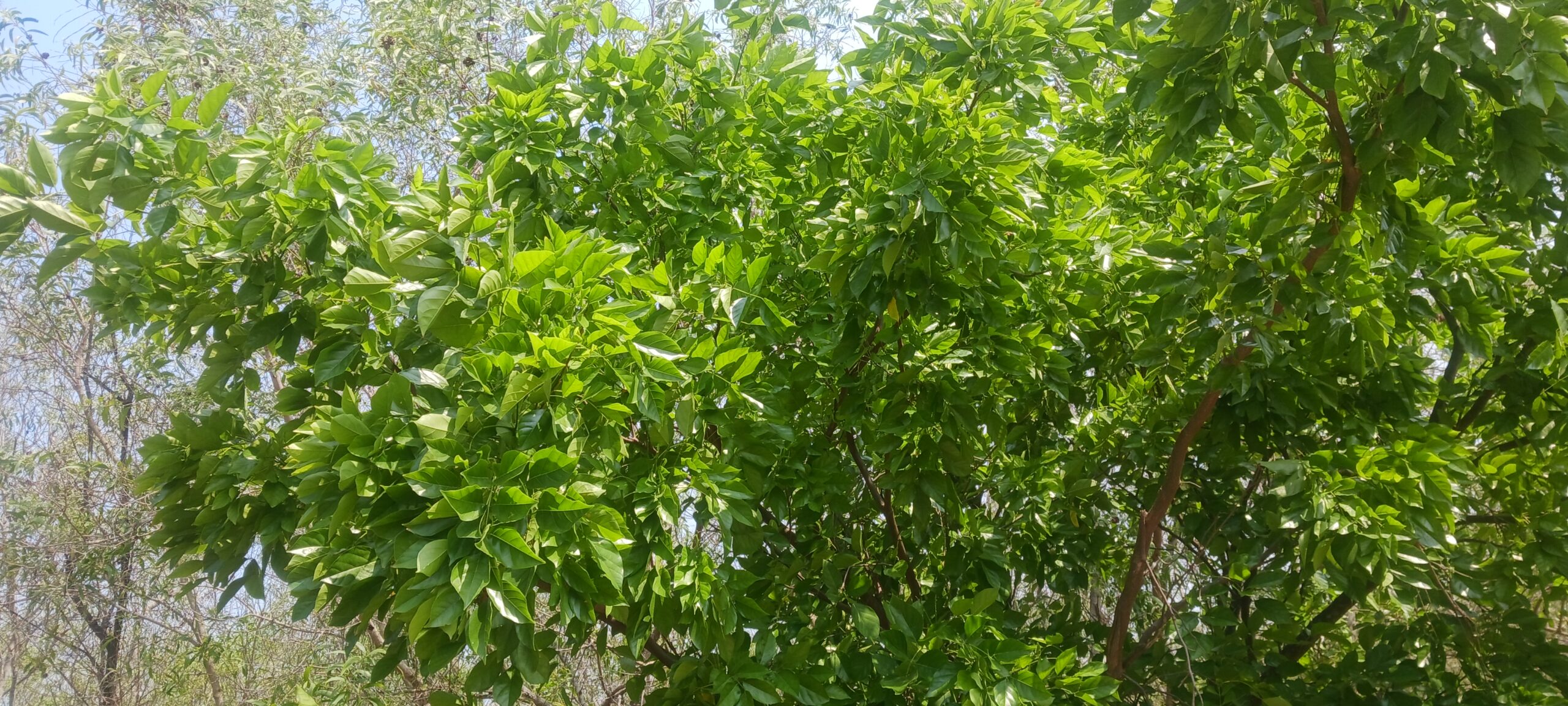Introduction

Karanja is fast growing, medium sized evergreen tree. Its scientific name is Pongamia pinnata. This tree grows vigorously under adverse condition and can seed prolifically. It resists drought well, moderately frost hardy and highly tolerant to salinity. It is often planted as Avenue tree nearly all over India for shade and grown as ornamental tree. It is well-established tree of age group 4-5Yrs and used for afforestation, especially in watersheds, in drier parts of the country and in social forestry plantations. In India, Karanja has been traditionally used by villagers on slopy uplands to bind the soil. Pongamia Pinnata found as one of the most suitable plants in India due to its good N2 fixing ability and not grazable eatable by animal. It is appreciated as an ornamental throughout coastal India and all of Polynesia. It is a preferred species for controlled soil erosion and binding sand dunes because of its extensive network of lateral roots. Grass grows normally beneath the tree, so it has been planted for shade in pastures. It is preferred species for controlled soil erosion and binding sand dunes because of its extensive network of lateral roots. This plant grown as a windbreak for tea plantation in Sri Lanka.
Family
It is belonging to Fabaceae (pea family).
Native
It is native to eastern and tropical Asia, Australia, Bangladesh and Pacific islands.
Common name
Indian beech tree, Karanja, Dithouri, Karuaini, Karanjaka, Natkamala, Huligili, Avittal, Unu, Pungu, Ungu.
Tree Height
It is usually growing up to 15-25mtr with diameter of stem up to 50-80cm and canopy spreads for casting moderate shade. The tap root is thick and long, lateral roots are numerous and well developed.
Stem
The bark is thin and grey to greyish brown in color with yellow on the inside.
Leave
The leaves alternate, imparipinnate with long slender leafstalk, hairless, pinkish red when young, glossy dark green above and dull green with prominent vein beneath when mature. The leaves consist of 5 to 7 glabrous leaflets borne in pairs (2 or 3) on slender stalks, and a single end leaf with long slender leafstalk, hairless, pinkish-red when young, glossy dark green above and dull green with prominent veins beneath when mature. It sheds its leaves in April and develops new leaves and flowers from May onwards.
Flower
Flowering generally starts after 3–4 years in between February to May with Pea-shaped flowers are generally 15–18 mm long and pink, light purple or white in color. Its flowers are considered a good source of pollen for honeybees in India, and they yield adequate nectar.
Fruit
Pods borne in quantities, smooth, oblique oblong to ellipsoid, flattened but slightly swollen, slightly curved with short, curved point (beaked), brown, thick-walled, thick leathery to sapwood, hard, indehiscent, 1-2 seeded, short stalked. Seed compressed ovoid or elliptical, bean-like, with a brittle coat long, flattened, dark brown, oily. Fruits ripen from February to May. They do not open naturally must decay before seed can germinate. Pod production starts 5-7 years after sowing.
Seed
The mature pods are brown in color, woody, indehiscent contain 1-2 seeds are light brown in color with a length of 1.0–1.5 cm. The seeds were collected from April to June and naturally exist for about 6 months. They do not open naturally and must decay before seeds can germinate. There are about 1500-1700 seeds per kilogram. Seeds remain viable up to 1 years when stored in airtight container.
Habitat
It is found in tropical and subtropical region in the world. It can grow in various types of soil like salty, alkaline, hefty clay, sandy, stony, and water-logged soils and shows high tolerance against drought bearing temperature up to 50°C. Pongamia grow strongly under adverse conditions and its dense root network and thick taproot make it drought tolerant. Recent research has shown the tree has great potential for reforesting damaged or degraded landscapes. It is an ideal tree recovering a variety of wastelands such as saline soil reclamation. It requires an annual rainfall ranging from 500 to 2500 mm with a 2-6 months dry period, and temperatures between 1°C and 38°C.
Uses
Pongamia is commonly used as a fuelwood with a calorific value of 4600 kcal/kg. In Philippines the bark is used for making strings and ropes. A thick yellow orange to brown oil is extracted from seeds. The oil is the most important product of the Pongamia tree and vast amounts of seeds are collected in India for commercial processing of industrial uses. The oil is used for leather dressing, soap making, lubrication and illumination purposes. After transesterification oil is used as biodiesel in diesel engines. The seed oil was formerly essential as an illuminate in lamps but has been largely replaced by kerosene. Its wood is moderately strong, light, widely used for bullock cart, farm implements, commonly used a fuel wood. Its Leaves are popular as green manure for rice, sugarcane fields, areca gardens, coffee plantations. Leaves with seed powder showed mosquito repellent activity. It has positive effect on soil N, P and K, mycorrhizal formation, nodulation in legumes.
Medicinal uses
The different parts of the tree are used for medicine. The medicinal plant pongamia pinnata leaf possesses the wide range of medicinal properties. Their juice is used for colds, coughs, diarrhea, dyspepsia, flatulence, gonorrhea and leprosy. The seed oil is rubbed as ointment on skin diseases and rheumatic parts. Oil showed antibacterial and antifungal activity. The fruits and sprouts are used in folk remedies for abdominal tumors in India. Roots are used for cleaning gums, teeth, and ulcers. Juice of the root is used for cleansing foul ulcers and closing fistulous sores. Bark is used internally for bleeding piles. Bark has been used for beriberi. Powdered seeds are valued as a febrifuge, tonic and in bronchitis and whooping cough. Flowers are used for diabetes. Young shoots have been recommended for rheumatism.
Ayurvedic medicine described the root and bark as alexipharmic, anthelmintic, and useful in abdominal enlargement, ascites, biliousness, diseases of the eye, skin, and vagina, itch, piles, splenomegaly, tumours, ulcers, and wounds;The sprouts, considered alexiteric, anthelmintic, aperitif, and stomachic, for inflammation, piles and skin diseases; the leaves, anthelmintic, digestive, and laxative, for inflammations, piles and wounds.The flowers for biliousness and diabetes, the fruit and seed for keratitis, piles, urinary discharges, and diseases of the brain, eye, head, and ski. The oil for biliousness, eye ailments, itch, leukoderma, rheumatism, skin diseases, worms, and wounds. Yunani use the ash to strengthen the teeth, the seed, carminative and depurative, for chest complaints, chronic fevers, earache, hydrocele, and lumbago.
Ther content on this website is provided Soley for informational purpose and is not intendent to substitute for professional medicinal advice, diagnosis or treatment. If you have any questions about a medical problem, please consult a physician or other authorized health expert.
Nursery
Pongamia most easily propagated by seeds. Ripe pods are collected off the trees in April-June, dried in the sun and removed the shells carefully by light hammering or pressing a knife along the structure. Generally, no pre-treatment is necessary for Pongamia seeds, direct sowing is usually successful. Seeds are sown in seed beds / polybags with micropyle facing down wards. Mulching in the sown bed is helpful. Germination is generally around 60%-80% and about 1,000 to 1,200 seedlings are obtained from one Kg of seeds depending upon source of seed and nursery efficiency. Germination is usually complete within 1-3 weeks after sowing. Seedlings transplant easily from the nursery to the planting site after about a year when it attains a height about 60cm.

